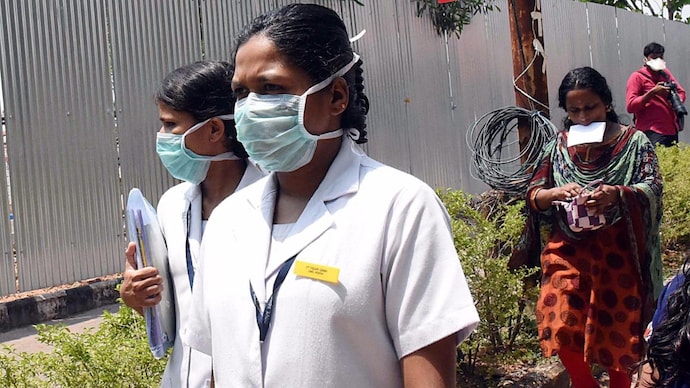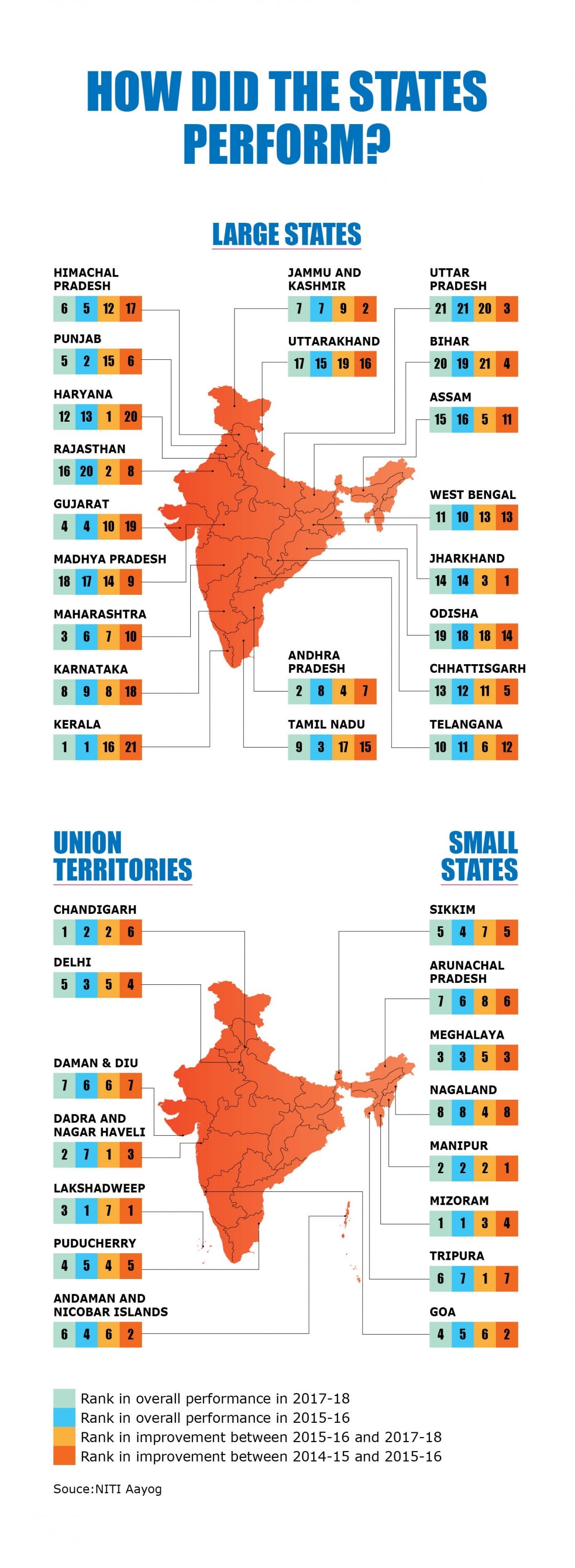How robust is the National Health Index? | India Today Insight
The NITI Aayog's second annual health index reveals inconsistencies and gaps in data. They need to be rectified urgently if India's only nationwide health survey is to serve any meaningful purpose.


In June this year, the NITI Aayog published the second edition of the Health Index, an annual exercise that measures the overall and incremental performances of states and Union territories in the health sector across multiple parameters. Overall performance refers to a state or UT's absolute performance in a reference year, 2017-18 in the case of the second Health Index.
Incremental performance measures improvements a state or UT has shown over a specific period-between 2015-16 and 2017-18 in the present index. As the Aayog states, the health index is an annual systemic tool to assess health outcomes in various states and UTs which they can in turn use to make multi-pronged interventions to improve their performance.
NITI Aayog prepares this index in collaboration with the Union ministry for health and family welfare, and the World Bank. The first Health Index, published in February 2018, had 2015-16 as its reference year while the incremental performance was evaluated between 2014-15 and 2015-16.
But is it a reliable index?
Though a laudable exercise, the Health Index has multiple limitations. Foremost among them is the non-availability of uniform data. Although the Aayog attempts to collect data across nearly two dozen indicators, not all states and UTs, especially smaller ones, are able to provide such data. Nor are these indicators (see table) the most comprehensive reflection of the state of healthcare in a particular state they have been chosen on the basis of availability.
This non-availability of data in India is not restricted to the healthcare sector, but it does make any such index vulnerable to misrepresentation. The data sets are also restricted to government entities; private healthcare providers are not included. The non-inclusion of insurance network (the duration of the study was between 2015-16 and 2017-18, before the Ayushman Bharat Yojana was rolled out) further weakens the index. And one significant indicator the study misses out is absenteeism in government hospitals.
Accepting these constraints in its report, the Aayog also admits that the index does not fully capture critical areas such as infectious and non-communicable diseases (NCDs), mental health, governance and financial risk protection because there is no acceptable quality data on an annual basis. For several indicators, the data are limited to service delivery in public facilities as private sector data is either not available or is very scarce. For other key outcome indicators, data were available only for larger states. Hence, the Health Index scores and ranks for smaller states and UTs did not include these indicators.
The unfeasibility of conducting independent field surveys led to Health Management Information System (HMIS) data and programme data being used for many other indicators without any field verification. In some instances, such as the rate of notification of tuberculosis cases, the programmatically accepted definition was used, which is based on the denominator per 100,000 population. The more refined indicator of TB cases notified per 100,000 estimated number of TB cases would have been used if data were available.
As West Bengal did not submit the approved data on the portal, its overall and incremental performance scores were generated by using pre-filled indicator data for 12 indicators, and repeating data for 2017-18 for the remaining 11 indicators.
How were the states evaluated?
They were clubbed in three categories-large states, small states and Union territories. The Health Index is a composite score of multiple indicators (23 for large states, 19 for small states and 18 for UTs) covering key aspects of health sector performance. These indicators have been grouped into three big domains-health outcomes, governance and information and key inputs/processes.

The big takeaways
- Eight large states (marked red in the table)-Andhra Pradesh, Maharashtra, Gujarat, Himachal Pradesh, Karnataka, Telangana, Haryana and Assam-have shown improvement in both overall and incremental performances since the first health index published last year
- Another eight large states-Punjab, Tamil Nadu, Chhattisgarh, Uttarakhand, Madhya Pradesh, Odisha, Bihar and Uttar Pradesh (marked blue in the table)-have slipped in both overall and incremental performance since the first health index
- Only two small states, Mizoram and Tripura (marked red in the table), have shown improvement in both overall and incremental performance since the first health index
- Four UTs-Chandigarh, Dadra & Nagar Haveli, Puducherry and Daman & Diu (marked red in the table)-have shown great improvement in both overall and incremental performance since the first health index. On the other hand, Lakshadweep (marked blue in the table) has shown the biggest drop-from first rank to third in overall performance and from first to seventh in incremental performance
- Despite several publicised initiatives by the Delhi government, the national capital (marked blue in the table) has slipped both in overall and incremental performance
- The gap between best performing states and least performing ones has become disturbingly wider-with a score of 74.01 in the index, Kerala is more than two and a half times ahead of Uttar Pradesh scoring just 28.61. Among the smaller states, Mizoram scores 74.97 as against 38.51 by Nagaland
- Though its overall score decreased over the previous index, Kerala maintained its top rank. Tamil Nadu dropped from third place to ninth and Punjab from second to fifth
- Some states such as Haryana, Rajasthan, Jharkhand and Assam, though positioned lower in overall performance, showed significant improvement between 2015-16 and 2017-18
- Some bottom-ranked states such as Uttarakhand, Madhya Pradesh, Odisha, Bihar, Uttar Pradesh and West Bengal have shown little progress between 2015-16 and 2017-18. It's cause for big worry
- Two states-Bihar and Uttar Pradesh-which had shown remarkable incremental improvement between 2014-15 and 2015-16, bagging third and fourth places, failed to capitalise on the initial advantage and slipped to 20th and 21st rank in incremental improvement
- Among the top-performing large states, Andhra Pradesh has shown exceptional results. It's the second best performing state and also occupies fourth place in terms of incremental performance between 2015-16 and 2017-18
- Among the eight small states, Tripura showed the highest incremental performance, though its overall rank is sixth. Manipur maintained its second position in both incremental and overall performance. Arunachal Pradesh and Sikkim recorded a worrying performance with a significant decrease in their index scores.
- Among the UTs, three-Lakshadweep, Andaman & Nicobar Islands and Delhi-registered a decline in their scores from the previous index
- There is a general correlation between the economic health of the states and their health index scores. States with better per capita net state domestic product have performed better. However, a few states-Jammu & Kashmir, Manipur and Mizoram-have performed well in the health index despite relatively low economic growth.
READ | 117 children dead by June 20: AES exposes Bihar health machinery
READ | Water woes: Running out of time
